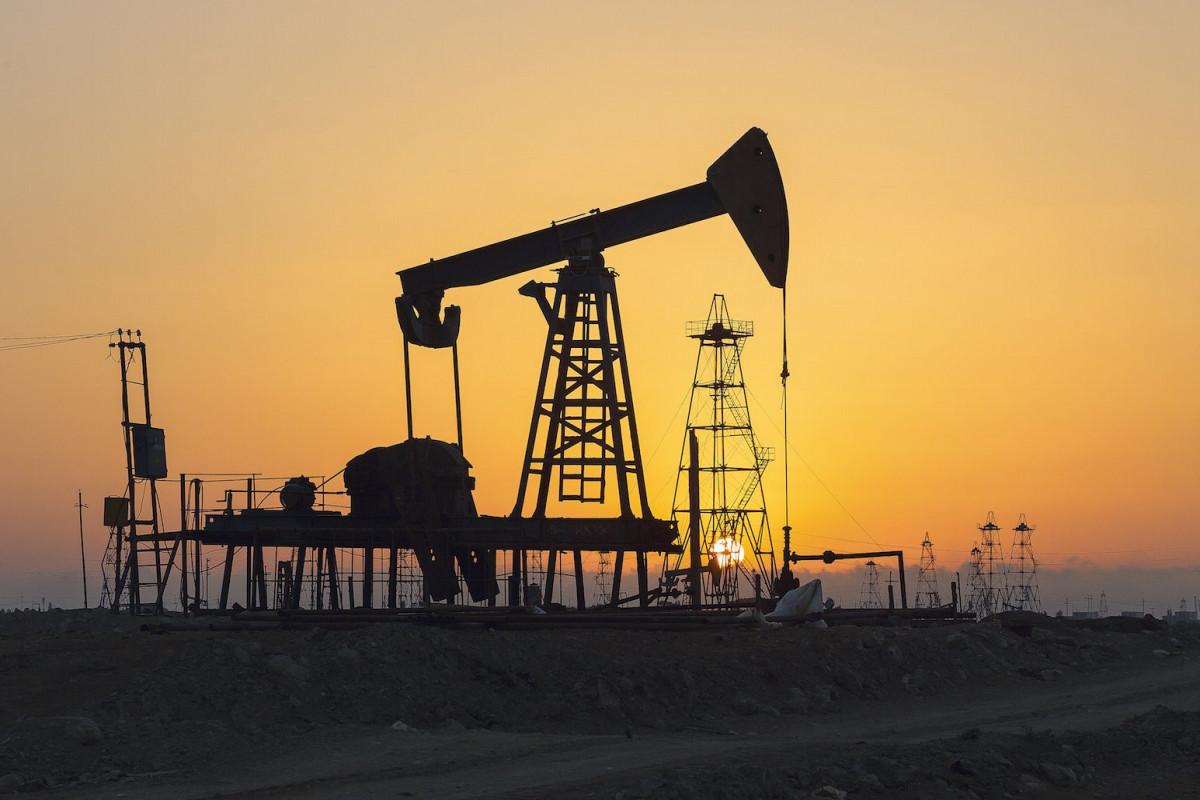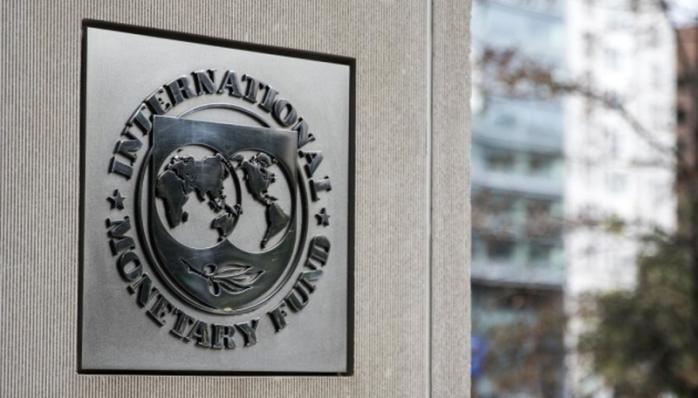Oil market at crossroads: IMF predicts economic growth for Azerbaijan Review by Caliber.Az
The decline in oil prices noted on the eve indicates an adjustment of the overheated energy market and may be a harbinger of a future reduction in demand for hydrocarbon raw materials. However, such a scenario is possible only in case of a global recession, involving markets in the EU, the US, China, etc. It is also necessary to take into account the real fuel shortage in the EU and the expected reduction of production in Russia and other countries, which, on the contrary, supports the current demand for oil. It is expected that average prices by the end of 2022 will not be less than $100 per barrel, which is extremely important for Azerbaijan, which has recently revised its budget. The lack of risks for the republic is also confirmed by the recent data of the International Monetary Fund, which improved GDP forecasts.
Global oil prices on Wednesday morning fell to their April lows, dropping below the landmark $100 a barrel mark: September Brent crude futures fell to $99.42 a barrel, while August WTI North American futures fell to $95.63. In contrast to the first half of 2022, when oil prices showed a steady upward trend, since the beginning of July prices for the "black gold" have fallen by almost 12%. Despite the contradictory versions, most experts agree that the reason for the decline was the overheating of the energy market, during the first half of the year fueled by speculative growth amid risks of shortages due to the war in Ukraine and anti-Russian sanctions. The real global demand for oil was somewhat overestimated, largely due to the situation in the European region, and on the other hand, high prices did not stimulate further growth of energy consumption in developing countries, primarily in the Asian region.
In particular, one of the downgrading factors specified by the Bloomberg agency is the growing number of infected with coronavirus in China: new outbreaks lead to a tightening of quarantine restrictions, which constrains expectations for the economy of the country and increases fears of a possible recession in the Asian region. Another reason is a noticeable strengthening of the US dollar (the world's key currency for transactions in the global oil market), which recently reached parity with the euro. The US dollar strengthened for the first time so confidently to a 20-year high, which led to a decline in prices for hedging tools - gold and commodities.
Investors also pay attention to the American Petroleum Institute (API) data on the commercial oil reserves in the US in the latest period. Thus, according to API, oil reserves in the country from the beginning of the month to July 8 jumped by 4.8 million barrels. As a result, Bloomberg notes, speculative players are betting on a further decline in oil demand, and this trend is already seen - the net long position on the main oil grades since early July has significantly declined. If the difficult situation in the EU and China will turn into a global recession, it is quite possibly the worst scenario for the largest financial conglomerate Citigroup of America will come true and by the end of the year, the oil may fall to $65 a barrel.
However, the situation in the oil market is not as unambiguous as it seems: the current drop in oil prices may be a temporary phenomenon, and today many experts predict at least maintaining the current prices, and possibly even increasing them by the end of the year. In particular, it is unlikely that the fuel shortage situation in Europe related to the sanctions and the war in Ukraine will be resolved by itself by the end of this year. OPEC oil cartel analysts estimate that Russia, deprived of markets, will slightly reduce oil production this year, and the decline will increase even further in 2023, dropping to 10.43 million barrels per day (bpd) from 10.8 million bpd in the relatively prosperous year of 2021.

Opportunities for a surge in oil supplies from the Central Asian region are also limited by the lack of a viable transportation alternative. The recent suspension of the Caspian Pipeline Consortium (CPC) marine terminal, through which Kazakhstan exports about three-quarters of its oil, is a case in point. If Moscow does not agree to settle the situation around the CPC in the near future, Nur-Sultan's earlier announced plans to sharply increase production at the Kashagan field and partly at Tengiz look quite difficult to achieve.
However, OPEC analysts do not expect the launch of new oil projects in Azerbaijan in 2022: the country's production of liquid hydrocarbons in the current year will increase on average by 47,000 bpd to 0.8 million bpd, while in 2023, by contrast, it will fall to 0.7 million bpd.
Overall, under stable conditions, OPEC+ production should have been enough to offset rising demand and balance oil markets. But due to underinvestment in previous years, many countries are unable to reach their production targets. This applies in particular to the leading oil-producing states in the Persian Gulf, North Africa, Venezuela, Indonesia, etc. "The lack of investment in the oil and gas industry after the 2014 crisis threatens energy security. In fact, this is one of the factors that exacerbated the industry downturn and led to the rise in oil prices in the last period. I think the years-long campaign to reduce investment in oil and gas has been extremely short-sighted," said Saudi Energy Minister Prince Abdulaziz bin Salman Al Saud, speaking at the International Petroleum Technology Conference and Exhibition (IPTC) in March. This is exactly why the US attempts to convince Saudi Arabia and neighboring oil-producing countries to sharply increase the production of hydrocarbons and reduce prices on the world market are so ineffective. This has to do not only with a conflict of interests (the Persian Gulf countries benefit from the current price level) but also with the purely technical impossibility of a drastic increase in production. In particular, the visit of US President Joe Biden to Saudi Arabia, scheduled for the near future, will be devoted to this issue, but today Riyadh's readiness for more compromises is very doubtful.
It is quite difficult to count on a noticeable increase in shale oil supplies from the US this year: the exchange rate strengthening and high inflation increase the costs of producing companies, and despite the increase in drilling operations and hydraulic fracturing of shale formations, the growth forecast for liquid hydrocarbons supply in 2022 remained at the same level - 1.3 million bpd.
Probably that is why, based on a combination of factors, the cartel is not concerned about the risks of a global recession, and OPEC has kept unchanged its estimates of oil demand growth in 2022, expecting an increase in consumption in 2023. Moreover, Fatih Birol, head of the International Energy Agency (IEA), said that the worst for the oil market is probably yet to come. Experts from Goldman Sachs think that if expectations of recession do not come true, this summer Brent oil may rise in price up to $140 per barrel. The forecast of experts of the Royal Bank of Canada is even tougher - the possibility of growth of oil prices to $150 and higher per barrel in the next year and a half is not excluded.
The near future will show which of the scenarios of the oil market development will be correct. For now, spot prices for basic brands of oil are still holding slightly above a mark of one hundred dollars. In particular, Azeri light crude, despite some decline in July, keeps a significant advantage over Brent: Azeri Light was traded at $113.91 per barrel on Wednesday morning on CIF basis in the Italian port of Augusta.
Keeping the average price of Azeri Light not below the symbolic level of one hundred dollars is crucial for Azerbaijan, especially taking into account the recent changes to the Law on the State Budget of Azerbaijan for 2022, which approved the growth of revenues and increased expenditures. Among other things, the parameters of the current state budget have changed the forecast for oil - the annual average oil price was increased from $50 to $85 per barrel. Thus, for this scenario to remain risk-free for the republic, the global average oil price level should be as high as possible above the budget cut-off price in Azerbaijan.

The relative risk-free nature of the amendments to the state budget adopted by the country is indirectly evidenced by the IMF statements published recently on the results of consultations with the government of Azerbaijan on Article IV of the Fund Charter, which took place from May 25 to June 7. So, the IMF improved the forecast for GDP growth in Azerbaijan in 2022 from 2.8% to 3.8%, which would be impossible without a favorable global oil market situation and is very important for the country, given the high share of revenues from energy exports. Meanwhile, the IMF experts predict an increase of assets of the State Oil Fund (SOFAZ) by 82.3% up to $82.076 bln in 2022-2028, and foreign exchange reserves of the Central Bank of Azerbaijan will increase up to $8.275 bln, an average of $200 mln a year. Obviously, without stably high oil and gas prices such calculations by the IMF on the growth of foreign exchange reserves would not be possible. The Fund's calculations on the nominal value of Azerbaijan's GDP can also be considered as well: this figure is gradually increasing from AZN 122.9 bn this year to 145 bn in 2027.








